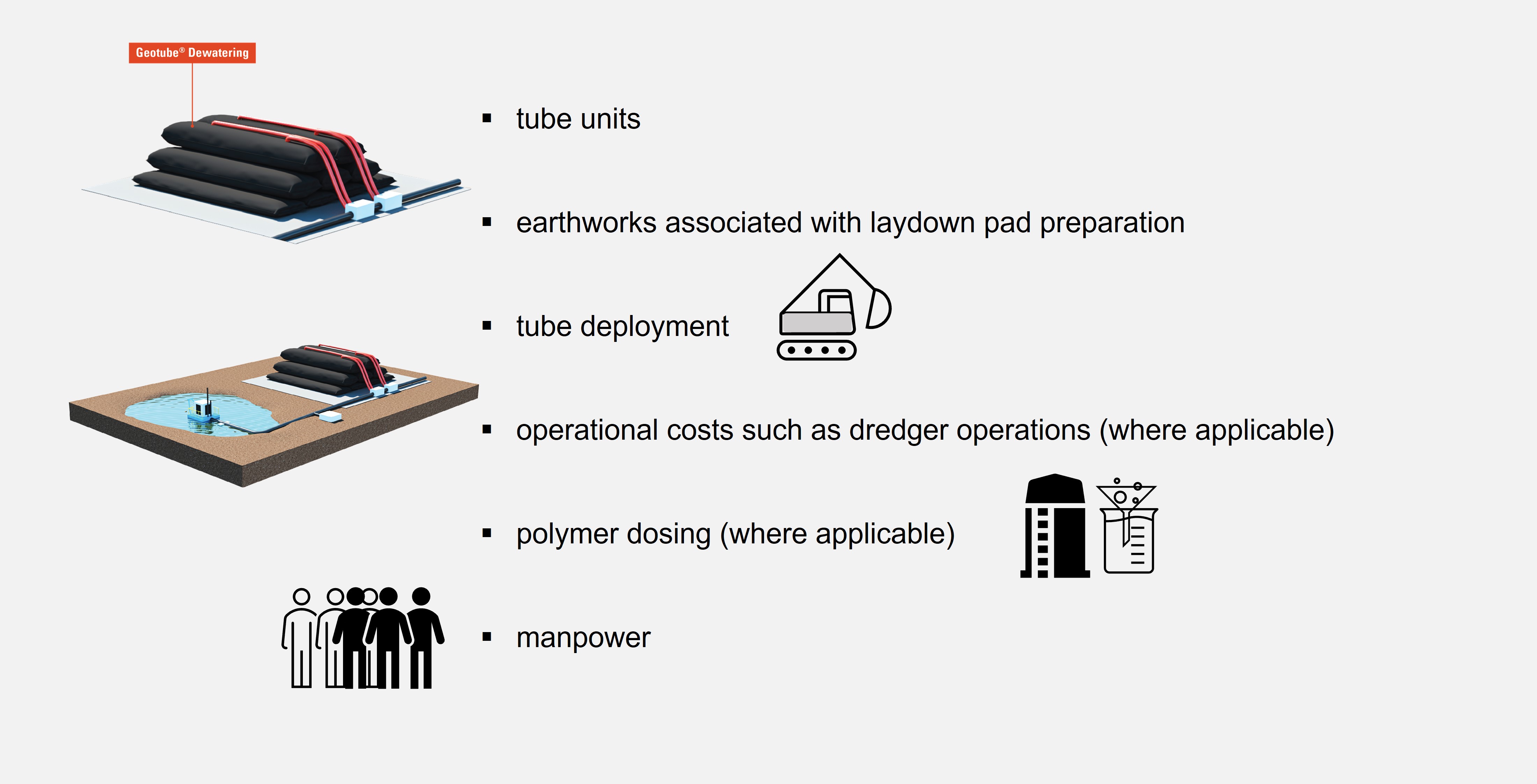Blog Bites 2: Geotube® Dewatering of Mine & Mineral Slurries
By Norhisam Omar

Welcome to our blog space where we share our insights and experiences in civil engineering and geosynthetics. We feature bite-sized articles for quick and easy consumption
Interest in the concept of dewatering mine and mineral slurries utilizing TenCate Geotube® systems continues to grow as engineers grapple with challenges of dealing with problems associated with excess water creating stability issues, dewatering containments reaching capacity, and using the system to improve or solve operational issues.
In Blog Bites #1 of "Mine & Mineral Slurries", we looked at what separates mine and mineral slurry dewatering from other slurry types. In Mining, engineers refer to tons as the unit of measurement, thus performance of the dewatering tube is evaluated in mass instead of volume. The mass and relative density of mineral solids dictates the maximum capacity and safe working limits of a Geotube® unit.
Let us now look at the considerations when comparing TenCate Geotube® system with conventional systems and how cost is evaluated in Blog Bites #2.
Initial Design & Feasibility
All Geotube® dewatering projects focus on the capability of the fabrics used to construct tube units to reliably dewater the slurry type being pumped. This is followed by assessing the most suitable tube configurations capable of securely handling the volumes of slurry and evaluating the costs involved.
For Geotube® dewatering systems, the cost usually includes the following:

Cost Comparison
For mining and mineral slurries, the cost is assessed in dollars per ton ($/ton). For non-mineral slurries are usually evaluated in dollars per m³ solids ($/m³).
When comparing the cost of Geotube® dewatering systems with conventional mechanical dewatering, it is important to consider equipment capital cost plus operating and maintenance costs, associated civil and other infrastructure costs.
As a general statement, Geotube® dewatering system is highly attractive when dealing with specific volumes of slurry contained within defined parameters. It cannot compete with conventional mass storage facilities such as conventional tailings dams (TSF) to handle high daily slurry flows. However, it can enhance specific operational issues and aid the development of more economic end-of-life closure options.
TenCate Geotube® dewatering systems are being widely used as part of the clean-up operations where contaminated slurries have inadvertently been discharged into the environment. There is also strong interest in the use of tubes to contain re-processed slurry as part of re-working old mineral-rich deposits and facilitating rapid water recovery and recovering rare earth minerals from acid mine drainage rehabilitation.
.jpg)
Next week, we look into the complexities of executing a Geotube® dewatering project .
If you have missed out on the first part of this series, check in to Blog Bites #1 - Mine & Mineral Slurries. See you next week!
Connect with us to know more or email us at info.asia@tencategeo.com



